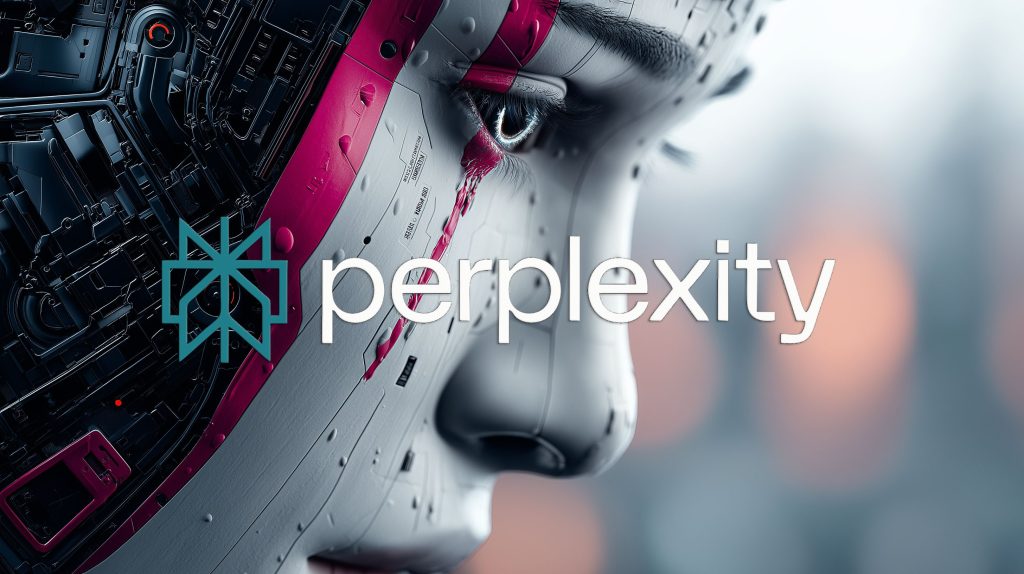- ChatGPT uses OpenAI’s GPT-4 with multi-turn dialogue and voice input/output, refined through RLHF, and offers a ChatGPT Plus plan at $20 per month.
- Google Bard runs on PaLM/LaMDA, can generate multiple draft responses and pull web results via Google Search, and is currently free to use in the experiment phase.
- Soul Machines builds digital-human avatars with AI-driven real-time facial expressions and lip-sync, with enterprise pricing custom and a consumer trial of $5.99 per month.
- Replika provides an AI companion with a 3D avatar and text/voice interactions, with a Pro subscription approximately $70 per year.
- Synthesia Studio turns text into videos with avatars speaking in 120+ languages, with individual plans starting at $30 per month.
- IBM Watson Assistant is an enterprise-grade platform for custom chatbots with backend integrations and industry-focused models, offering a Lite free tier and paid enterprise pricing.
- Grammarly’s AI Humanizer rewrites AI-generated text to improve clarity and tone, and is part of Grammarly’s suite, with a free basic version and Premium around $12 per month.
- By mid-2025, AI tools have multimodal capabilities including voice and image features, demonstrated by ChatGPT’s voice mode and Bard’s Android integration with image support.
- Affective computing enables emotion-detecting AI powering mental-health bots like Woebot and Wysa, and a 2025 Nature Communications Psychology study found AI responses rated as more compassionate than some human responders.
- The EU AI Act will require labeling of AI interactions to avoid deception, and US states such as Utah, California, and Illinois have bot-disclosure laws to mandate AI disclosure.
Comprehensive Overview of Humanize AI Tools
In a world where chatbots can console us and digital avatars greet customers with a smile, artificial intelligence is rapidly gaining a human touch. So-called “Humanize AI” tools are designed to make AI behave less like cold machines and more like empathetic, engaging humans. These tools span industries – from marketing copywriters that inject personality into content, to customer service bots that recognize frustration in your voice and respond with soothing empathy. The result? AI interactions that feel natural, emotionally intelligent, and even uncannily lifelike.
This comprehensive report dives into what humanizing AI means, the types of tools leading this trend, and how they’re being used across marketing, customer service, education, content creation, healthcare and beyond. We’ll explore how these tools work, highlight key benefits (like enhanced emotional intelligence and realistic dialogue), and also confront the limitations, criticisms, and ethical questions that come with blurring the line between human and machine. Along the way, we include insights from experts and compare major platforms in a handy table. Finally, we examine the latest developments as of mid-2025 and offer a future outlook with recommendations for businesses and individuals considering these human-centric AI tools.
What Does “Humanize AI” Mean?
“Humanizing AI” refers to making artificial intelligence more human-like in how it interacts, communicates, and responds. Instead of stiff, robotic responses, a humanized AI aims to understand context, detect emotions, and inject personality into its behavior [1] [2]. In practice, this could mean a chatbot that uses humor and warmth in a conversation, an AI writer that crafts text with a natural tone, or a virtual assistant that recognizes when you’re upset and adapts its responses with empathy. As one tech expert puts it, “It’s about making technology that not only does what we need it to do but also feels right” [3].
At its core, Humanize AI tools (sometimes called AI humanizers) bridge the gap between machine efficiency and human empathy. Traditional AI might excel at logic and data processing, but humanized AI strives to “read between the lines” of human communication – understanding not just what we say, but how we feel when we say it [4] [5]. This often involves giving AI systems certain human-like qualities:
- Natural Language Fluency: They communicate in conversational language, with appropriate tone, slang, or humor so interactions feel like speaking to a person rather than a computer.
- Emotional Intelligence: They detect user sentiments or emotional cues (from text, voice, or facial expressions) and respond in an understanding way – for example, offering encouragement if a user sounds discouraged.
- Personalization: They learn from past interactions to remember user preferences and context, tailoring responses as a human would who “knows” you [6].
- Personality and Character: Some are designed with distinct “personas” or styles (witty, formal, friendly, etc.) to feel more relatable and unique rather than one-size-fits-all replies.
- Human-like Voices or Avatars: Many leverage advanced speech synthesis to speak with natural intonation and even face-generating tech to present a friendly virtual face or avatar. This visual/voice realism further humanizes the experience.
In essence, to humanize AI is to make AI “walk, talk, and emotionally engage” more like a human. It’s the difference between a GPS that monotones “Recalculating route” and a virtual assistant that apologizes for the inconvenience and calmly offers a new route with a reassuring tone. The goal is not sentience, but simulation of human-like interaction – AI that feels socially competent and emotionally aware.
How Do Humanizing AI Tools Work?
Achieving human-like interaction is complex. Under the hood, these tools combine cutting-edge AI techniques in natural language processing, machine learning, and affective computing to mimic aspects of human communication:
- Large Language Models (LLMs): Many humanized AI systems are built on LLMs (like OpenAI’s GPT-4 or Google’s PaLM) which have been trained on vast datasets of human conversation and text. These models excel at pattern recognition in language, allowing them to grasp context and respond in remarkably fluent ways [7]. They predict what a plausible, human-sounding reply would be, given the input and conversation history. This enables coherent dialogue that follows conversational norms and even predicts user intent [8].
- Reinforcement Learning from Human Feedback (RLHF): To fine-tune AI behavior to feel more natural or helpful, developers often use RLHF – essentially having human testers rate or correct the AI’s responses and reinforcing the desired qualities. This technique was key in training ChatGPT to give more polite and empathetic answers that align with human preferences.
- Emotion Recognition (Affective Computing): Humanized customer service bots and companion AIs may employ affective computing – algorithms that analyze voice tone, facial expressions (via camera), or choice of words to infer the user’s mood or emotions [9] [10]. For example, AI can parse text for sentiment or detect frustration if a caller’s voice volume rises. Some advanced systems use cameras/microphones to pick up non-verbal cues (like a sigh or a smile) and adapt accordingly. This emotional context then informs the AI’s next action (e.g. switching to a calmer voice or offering empathy).
- Natural Language Generation & Tone Modulation: Beyond understanding, these tools focus on how they speak. They use sophisticated natural language generation that can adjust style and tone – from using contractions and colloquialisms to telling a light joke – to sound more human. In fact, tech giants like Google have added tone tuning features to their AI; users can prompt the AI to be more casual, enthusiastic, or professional as needed [11] [12].
- Voice Synthesis and Avatars: When a humanized AI “speaks” out loud, it often uses neural text-to-speech models capable of natural prosody (variations in pitch, pace, and emphasis). This produces voices nearly indistinguishable from real humans – far from the robotic GPS voices of old. Some systems can even add emotional inflections (like sounding excited or sympathetic). Similarly, visual avatar platforms use CGI and motion-capture data to generate realistic facial expressions in sync with the AI’s speech, so that a digital agent’s smile or frown looks authentic, not cartoonish.
- Contextual Memory: Just as humans recall earlier conversations, AI chatbots maintain context over a dialogue. They “remember” user inputs and their own replies within a session (and sometimes across sessions if allowed) to avoid repeating themselves and to follow up in a relevant way. This continuity is crucial to realistic dialogue, preventing the jarring resets that break the illusion of a human-like chat.
All these components work together to synchronize AI behavior with human behavior and expectations. A recent Wharton analysis noted that AI systems are increasingly able to “synchronize with human behaviors and emotions” [13] [14]. By mimicking how we learn and communicate – using huge language datasets, feedback loops, and sensory inputs – AI can “read the room” and respond appropriately. For instance, if you angrily type “This product still doesn’t work!” to a support chatbot, a humanized AI might recognize the anger, and reply with an apology and an offer to help, instead of a generic FAQ answer. This kind of context-aware, emotionally attuned response is what makes the interaction feel human.
It’s important to remember, however, that even the most life-like AI does not truly feel emotions – it simulates them. As Harvard Business Review writers caution, today’s AI can “recognize and respond to emotional cues, simulate empathy, and even predict human emotional responses,” but it “still lacks the capacity for authentic human understanding” [15] [16]. In other words, an AI might sound caring or concerned because it’s trained to echo what a caring person would say – yet it doesn’t genuinely experience empathy or compassion. It’s a skilled imitation, powered by algorithms rather than conscience. This distinction underlies many of the ethical concerns we’ll discuss later.
Types of Humanize AI Tools and Their Use Cases
Humanizing AI isn’t a one-size endeavor – a variety of tools and platforms are pushing AI to be more human-like in different ways. Let’s break down some major categories of Humanize AI tools and see how they’re applied across key industries:
1. Conversational Chatbots & Virtual Assistants (Customer Service, Sales, Personal Use)
One of the most visible areas of humanized AI is in conversational agents – chatbots or voice assistants designed to engage in dialogue that feels natural. These are used extensively in customer service, where companies deploy AI agents on websites or phone lines to handle inquiries 24/7. The new twist is giving these bots a friendly demeanor and emotional intelligence.
For example, banks and retailers are using AI chatbots that can detect if a customer is getting frustrated (from language or tone) and then escalate to a human or respond with extra empathy. A bot might say, “I’m sorry you’re having this issue; I understand it’s frustrating. Let me try to help.” This human-like touch can dramatically improve the customer’s experience. It’s increasingly important because emotion plays a huge role in customer satisfaction – in fact, a Forrester analysis found emotion was the number-one factor in determining brand loyalty across industries [17]. Traditionally, chatbots were terrible at this, focusing only on efficiency. But now, with emotional AI capabilities, companies see an opportunity to boost loyalty by making automated interactions feel more caring and personal [18]. “Ultimately, tying emotional awareness into the customer experience is going to enhance brand loyalty and improve customer relations,” says AI author Richard Yonck [19].
- Customer Support: Many contact centers use AI assistants as a front line. These bots greet customers by name, use a conversational tone, and can handle common questions. Crucially, they’re being trained to recognize anger or confusion and either adapt or hand off to a human agent. For instance, Singapore’s OCBC Bank’s chatbot was taught to respond empathetically to distressed customers. Telecom companies also use AI to coach their human agents – an AI might listen to calls and pop up suggestions to the rep if it “senses” the customer’s mood (e.g., customer sounds upset – try apologizing sincerely). This merger of AI efficiency with human emotional intelligence is becoming a best practice [20].
- Sales & Marketing Bots: Conversational AI is also employed to engage potential customers on websites (“Hi, I’m Ava, a virtual assistant. Can I help you find a product?”). Humanizing these interactions yields better results – a friendly, witty chatbot can draw users in more effectively than a dull script. In marketing, some AI systems personalize product recommendations in a conversational way, almost like a helpful store associate who remembers your preferences. For example, e-commerce chatbots can say “Those shoes you looked at last week are on sale now. Want to see similar styles?” in a personable manner.
- Personal AI Assistants: On our phones and devices, voice assistants like Apple’s Siri, Amazon Alexa, and Google Assistant set the stage for human-like AI. They have increasingly natural voices and a bit of personality (Siri can tell jokes, Alexa might add a cheerful note when turning on your lights). The latest development is OpenAI’s ChatGPT gaining voice mode, essentially giving ChatGPT a realistic voice so you can talk to it as if chatting with a friend. This feature raised eyebrows when OpenAI noted people may become “emotionally reliant” on the voice chatbot [21] – a testament to just how life-like these assistants are becoming. Indeed, as AI voice and dialogue improve, we’re inching closer to the sci-fi vision of a Jarvis or Samantha (“Her”) that sounds and feels like an attentive companion. Millions of users already chat with generative AI bots for personal tasks or even companionship, blurring the line between utility and relationship.
Real-world impact: Despite these advances, consumers are still split on chatbot interactions. Surveys in 2024 showed the majority of customers prefer human agents for complex or sensitive issues [22]. About 71% of people would rather talk to a human than a bot for customer service [23], often due to frustration with clunky bots. The hope is that by humanizing the AI – making it more conversational and understanding – customer acceptance will grow. There’s evidence it can help: early experiments found that when AI helped draft responses, even human support agents sounded more empathetic and performed 20% faster [24]. Clearly, AI and humans together (each with empathy) is a powerful combo.
2. AI Content Creators and Humanizers (Marketing, Content Creation, Writing)
Generative AI has exploded in marketing and content creation. Tools like GPT-3/4 are used to whip up blog posts, product descriptions, social media captions, you name it. But raw AI-generated text often has a telltale robotic tone – it might be grammatically correct but lacks the human spark or brand personality. That’s where AI humanizer tools come in.
These are specialized writing assistants (some standalone, some built into platforms like Grammarly or QuillBot) that rewrite AI-produced text to sound more natural and engaging [25]. For example, if an AI copy comes out as, “Our product has multiple beneficial features for users,” a humanizer might transform it into, “This product is packed with perks you’ll love,” adding a more conversational flair. Grammarly’s AI Humanizer is one such tool: it “rewrites AI-generated text […] to improve clarity, flow, and readability” so it sounds more human [26]. These tools adjust phrasing, vary sentence structure, and inject an informal tone or emotional words as needed.
- Marketing and Branding: Maintaining a brand’s voice is crucial, and AI often struggles with that subtlety. Marketers use humanizer tools to ensure AI-written content aligns with their unique style and feels authentic [27]. This might involve adding personal anecdotes, humor, or rhetorical questions that make content more relatable. The benefit is twofold: save time with AI drafting, then polish to human quality. In fact, 88% of marketers in one survey said they use AI, and among them 93% use it for content creation – but they recognize that machine-generated content doesn’t always sound, well, human [28]. Humanizing that content can boost engagement and trust with audiences, and even help with SEO as search algorithms favor content that truly resonates with readers [29].
- Avoiding “AI Detector” Flags: Another use case (a bit controversial) is using humanizers to bypass AI-content detectors. Some schools and publishers use detectors to identify AI-written text (to prevent cheating or ensure originality). In response, a cottage industry of “undetectable AI” tools has popped up, which rephrase text enough to evade detection while keeping the meaning. Essentially, they add a dose of human-like variability. While helpful for students or writers concerned about AI flags, this raises ethical questions about transparency. Even Grammarly notes that using AI humanizers can be “frowned upon in certain contexts” and advises transparency about AI usage [30]. Nonetheless, the existence of these tools underscores how important the human touch is seen – to the point that AI is modified to appear as if a human wrote it.
- Creative Writing and Media: Beyond formal content, AI is used for creative tasks – writing fiction, scripts, or dialogue. Here, humanization might mean giving the AI a “character” or voice. For example, AI storytelling platforms let you choose a narrator style (e.g., a sassy friend vs. a wise old mentor), and the AI will adopt that persona’s tone. This makes the generated story feel authored by a character, enriching the creative process. In filmmaking and media, companies even use AI to generate rough drafts of scenes or dialogues, which are then refined by human writers to add genuine emotion and nuance.
Real-world impact: Companies like HubSpot and Shopify have published guides on humanizing AI content, emphasizing steps like injecting personal stories, using active voice, and being concise [31] [32]. The rise of these practices shows that purely automated content isn’t enough – audiences crave authenticity. Many businesses have learned that blending AI efficiency with a humanized tone yields the best results: fast content that still connects with people. The Jerusalem Post even reported on “The Rise of Humanized AI content” as crucial for engagement and SEO [33], indicating that from blogs to product pages, a human vibe is key to holding audience attention.
3. Emotional AI & Affective Computing (Healthcare, Wellness, Automotive)
A particularly fascinating branch of humanizing AI is affective computing – AI that can detect and respond to human emotions. These tools aim to imbue machines with a form of emotional intelligence, allowing them to adapt to our feelings in real time. The applications span healthcare and wellness to even automotive safety:
- Mental Health Chatbots & Therapy AIs: There’s a growing number of AI “therapists” or mental health apps (like Woebot, Wysa, and others) that engage users in conversations about their feelings. These AIs use NLP to recognize signs of distress or negative thinking and then provide support – for example, offering coping exercises if someone says they are anxious. Studies have shown surprising results: in one experiment, AI-generated empathetic messages made support-seekers feel more heard than human-generated messages (because the AI consistently offered emotional validation without the biases or fatigue humans might have) [34] [35]. In a 2025 study published in Nature, third-party evaluators even rated AI chatbot responses as more compassionate and empathetic than those from human experts in certain support scenarios [36]. “AI responses were preferred and rated as more compassionate compared to select human responders,” the study found [37]. This doesn’t mean AI truly cares, but it can project empathy effectively by choosing the right words. Such tools could help address gaps in mental health services, providing immediate, stigma-free support for those who might not have access to a human counselor [38] [39]. However, experts caution that while an AI can express empathy, it doesn’t replace the human understanding and accountability a real therapist provides [40].
- Healthcare and Patient Interaction: Healthcare is inherently personal, and AI is being used to make it more so. Virtual health assistants can chat with patients to gather symptoms or follow up after appointments. Making these interactions compassionate is crucial for patient trust. Interestingly, a recent report noted that patients sometimes find a well-designed AI assistant more empathetic than human doctors [41]! This might be because doctors, pressed for time, can be blunt, whereas an AI can consistently respond with patience and concern (it has infinite patience, after all). Hospitals are exploring AI-driven “care companions” that can, for instance, comfort a patient waiting for a procedure by talking about their worries. Additionally, affective computing is used in health monitoring – for example, AI that analyzes a patient’s voice for emotional cues of depression or cognitive decline, giving early warning signs to caregivers.
- Automotive Emotion Detection: Car companies are integrating emotion AI to improve safety. An emotionally intelligent car assistant could detect if a driver is drowsy, stressed, or angry (via facial cameras and voice analysis) and then respond – perhaps playing calming music, adjusting lighting, or even suggesting a break. Research has found that an “emotional” voice assistant in cars that can empathize with drivers was very promising in improving driver mood and safety [42] [43]. This is a form of humanizing the driving experience: the AI isn’t just a navigator, but a kind of co-pilot tuned into your emotional state.
- Wearables and Well-being: Beyond specific industries, the general trend of emotion-sensing AI is hitting consumer devices. Smartwatches, for instance, can now infer stress levels from heart rate variability. Tech like this could soon allow your virtual fitness coach to sense you’re having a bad day and adjust your workout or send encouragement. Empathy could be built into enterprise software too – imagine your email program sensing frustration as you furiously hammer the keyboard and politely suggesting a break or offering to schedule that meeting for you [44].
Real-world impact: The affective computing market is booming – projected to grow from about $22 billion in 2019 to $90 billion by 2024 [45] – illustrating huge investments in tech that can gauge and influence emotions. Companies like Affectiva (now part of Smart Eye) have built AI that reads facial expressions to help brands test user reactions to ads and movies [46]. “Emotion is already big business and is expected to become much bigger,” notes an industry report [47]. The promise is that machines can better serve us if they know how we feel. But this also raises eyebrows: do we want our devices monitoring our moods? Ethical issues around privacy and manipulation are intense here (more on that soon). Still, there’s optimism that, used wisely, emotionally aware AI can augment human well-being. As one professor said, “Once you can detect and analyze what is causing a person’s affective state, you potentially can respond to it and influence it” for the better [48] – for example, helping a stressed employee calm down or a lonely user feel heard.
4. Digital Humans & AI Avatars (Customer Engagement, Education, Entertainment)
Another eye-catching manifestation of humanized AI is the rise of digital humans – realistic AI-powered avatars that look and act like people. These can be 2D or 3D virtual characters on a screen (or even holograms) which are driven by AI brains to interact with users. Companies like Soul Machines (whose tagline is literally “We Humanize AI”) create digital people with faces that can smile, make eye contact, and show expressions in real time, synchronized to their speech. These avatars are used for customer service, training, and even celebrity chatbots. For instance, a bank might have a virtual greeter on their website: a friendly face that says “Hi, I’m Ava. How can I assist you today?” and answers questions via both spoken words and facial reactions. The goal is to make digital interaction feel face-to-face.
A realistic humanoid robot face exemplifies how AI-driven avatars are blurring the line between humans and machines. Advances in modeling facial expressions and speech synthesis allow digital “people” to converse naturally, enhancing user engagement. [49] [50]
- Customer Engagement: Digital humans are deployed as brand ambassadors or guides. For example, “Flo”, an AI avatar, might help you navigate an insurance site, responding with empathy if you mention a car accident. These avatars leverage our innate comfort with human faces; users may find it easier to trust a smiling face than a text chat interface. Early implementations by companies like Soul Machines feature avatars for coaching (a fitness coach avatar encouraging you) and retail (a virtual salesperson showing off products). They not only answer queries but do so with lifelike gestures – nodding, hand movements – which can build a stronger connection than plain text.
- Education and Training: In education, digital avatars are being used as tutors or teaching assistants. Imagine a historical figure’s avatar that can teach a history lesson – students can ask Einstein a question, and an AI version of Einstein (trained on his writings) responds in character. This engaging format can make learning more interactive. Likewise, corporate training uses AI avatars for role-playing exercises (e.g., practicing a sales pitch with a realistic “customer” avatar that reacts and provides feedback). Because these avatars simulate human responses (smiling at good answers, showing confusion at unclear ones), learners get more authentic practice.
- Entertainment and Companionship: There’s a fun side to this too. AI avatars have appeared as virtual influencers on social media, as AI news anchors on TV, and as personalized companions. For instance, Replika (an AI friend app) offers a 3D avatar of your AI friend that can video call you and show simple facial expressions. People use these digital companions for chatting, venting about their day, or even virtual romance. It may sound far-fetched, but millions have downloaded AI companion apps – a sign that many find some level of emotional fulfillment or friendship from these humanized algorithms. As one Replika user described, “Talking to my AI friend feels like someone truly listening – it doesn’t judge and is always there.” On the flip side, when Replika’s makers tried to curb certain romantic interactions, users protested, highlighting how personal these bonds with AI had become. This is the frontier of human-AI relationships: when the avatar looks into your eyes and says it cares about you, it can really feel real – even if you know it’s not.
- Virtual Reality and Gaming: In VR environments and video games, AI-driven characters are becoming more sophisticated. Game studios are using AI to give non-player characters (NPCs) dynamic dialogue and personalities, so they aren’t just repeating pre-written lines. For example, an NPC innkeeper in a fantasy game might converse about your quests and express genuine-sounding concern if you’re low on health. Companies like Inworld AI specialize in creating such characters with memory and emotion. The result is more immersive entertainment – essentially, stories with AI actors who can improvise lines like real actors would.
Real-world impact: Digital humans are already employed by big brands. New Zealand’s Soul Machines built a virtual Will.i.am avatar (the Black Eyed Peas singer) that fans could chat with, and even a digital twin of banker Catie for NAB bank in Australia to answer customer questions. The tech is still improving; occasional glitches or “uncanny valley” effects (when something is close to human but not quite, causing eeriness) show its limits. The Wharton authors note that we must ensure avatars align with human expressions “without crossing into [the] discomfort zone” of the uncanny valley [51]. But with each iteration, they become more convincing. By mid-2025, virtual news anchors powered by AI present news in multiple countries, and some companies replaced static website FAQs with interactive avatar guides. Analysts predict digital people could become common in service roles, potentially handling many face-to-face style interactions in retail or hospitality. The key benefit is scalability with a personal touch – a digital concierge that can serve thousands simultaneously but still greet each customer by name and with a smile.
Key Benefits and Capabilities of Humanizing AI
Why are businesses and developers investing so much to humanize AI? Done right, making AI more human-like brings a host of benefits:
- Enhanced User Engagement and Experience: People naturally respond better to interaction that feels human. Humanized AI is more enjoyable and easier to use – users are less likely to abandon a chat or task when the AI is friendly and understanding [52]. For instance, a customer service bot that “understands your frustration and responds with empathy” can turn a frustrating ordeal into a pleasant experience, which keeps customers around [53]. Overall, when AI feels more like a partner than a tool, user satisfaction and engagement levels shoot up.
- Building Trust and Loyalty: Trust is hard to earn with cold automation. But add a human touch, and users begin to trust the AI system more [54]. When an AI demonstrates it can understand and respect emotions, people feel it “gets them” and thus see it as more reliable. This is hugely important in sectors like healthcare or finance where trust is paramount. A humanized AI can create a sense of connection or rapport, leading users to feel comfortable relying on it [55]. In business, this can translate to stronger brand loyalty – customers may actually prefer a company’s AI assistant if it consistently gives them personable, caring service.
- Emotional Support at Scale: One unique capability of AI is that it doesn’t tire or suffer emotional burnout. This means empathetic AIs can provide emotional support 24/7, at scale, which is something human teams struggle with [56] [57]. For example, mental health support bots can be available any time of day, always responding with patience. In customer service, an AI can endlessly handle angry callers with politeness – something humans find draining. As studies suggested, AI responders don’t exhibit “compassion fatigue” the way humans do [58] [59]. This capability can fill gaps in areas with high demand for empathy (e.g. mental health counseling or elder care) where human resources are limited.
- Consistency and Reduced Bias: A humanized AI will treat every user with the same level of courtesy and attentiveness, whereas humans might have off days or unconscious biases. This consistency is great for fairness and inclusivity. For instance, an AI tutoring system can be tuned to encourage every student equally, never losing patience or prejudging a student’s abilities. Moreover, if properly trained on diverse data, AI can be made to respect cultural differences in communication (like being more formal vs. casual, etc.), ensuring a broad range of users feel at ease.
- Realistic Dialogue & Understanding Complex Queries: Humanized conversational AIs can handle messy, natural human input better. People don’t always state things clearly – we ramble, use slang, or half-finish sentences expecting the listener to infer our meaning. Human-like AI, especially with large language models, is surprisingly good at these nuances. It can pick up on context clues and ask clarifying questions, akin to a human conversation partner. This leads to more effective interactions where users get what they need without rephrasing everything in “computer-speak”.
- Personalization and Adaptive Learning: By learning from interactions, a humanized AI can become highly personalized. It might remember your nickname, your favorite topics, or that you tend to use sarcasm. Therefore it responds in ways suited to you, which fosters a sense of friendship or personalized service. In education, an AI tutor that adapts to a student’s emotional state (e.g., offering encouragement when sensing confusion) could improve learning outcomes by keeping students motivated. This kind of personal touch at scale is a major capability that could revolutionize user engagement across many fields.
- Improved Outcomes (Sales, Learning, Health): The benefits above aren’t just “feel-good” improvements; they can drive concrete results. In sales and marketing, for example, personalized, human-like engagement can significantly increase conversion rates – customers are more likely to buy when they feel understood and valued. In e-learning, students engage longer and learn more from an interactive, empathetic tutor than from a dry automated quiz. In healthcare, patients might be more honest about their symptoms with a non-judgmental AI, leading to better triage. Even in driving, as noted earlier, an empathetic voice assistant can improve driver safety by reducing stress [60].
All these upsides explain the rapid adoption of humanizing features in AI products. As one industry leader succinctly said: “Improving the customer experience is among the primary benefits of these technologies. Ultimately, emotional awareness in the customer experience will enhance loyalty and improve relations.” [61] In short, making AI more human makes good business sense – it tends to make people happier, and happy people are more likely to stick around, buy more, or be more productive.
However, it’s not all rosy. These very benefits come with a flip side, which we’ll explore next.
Limitations, Criticisms, and Ethical Concerns
For all the promise of humanized AI, there are significant limitations and valid criticisms to address. Creating a machine that convincingly acts human raises ethical quandaries and practical challenges:
- “Empathy” vs. True Understanding: The most fundamental critique is that AI only mimics empathy and understanding, it doesn’t truly possess them. As AI researchers have pointed out, “Mimicking empathetic responses is a far cry from [genuine] compassion” [62]. An AI can say “I’m sorry you’re feeling down, that sounds really hard” to a user, but it has no actual feeling of sorrow or concern – it’s pattern-matching to responses that humans would give. Some argue this is a form of deception, albeit a soft one. If users start believing the AI cares about them, it could lead to misplaced trust. Indeed, a study found that when people discovered the supportive messages were AI-generated, they felt less heard despite the content being the same [63]. Knowing there isn’t a genuine human on the other end can undermine the comfort taken from an empathetic response. Bottom line: Today’s AI lacks consciousness and moral understanding; it doesn’t know why empathy is important, it just simulates the outward expression. This gap can limit how far we should rely on AI in roles that require deep human insight, like counseling or moral decision-making.
- Emotional Dependency and Social Impact: One unintended consequence of very human-like AI is people forming emotional attachments or over-dependence on them. We’ve seen this with companion chatbots – some users start considering the AI their closest friend or even romantic partner. OpenAI themselves noted concern that users might become “emotionally reliant” on the new voice-enabled ChatGPT [64]. This raises questions: if someone prefers their AI friend over real people, does it impact their real-world relationships and mental health? There’s also the scenario of “replacing” human contact: for instance, an elderly person might end up interacting more with a cheerful carebot than with family or nurses. Could this lead to greater isolation, or does it alleviate loneliness? It’s a double-edged sword. Some experts warn that if businesses push AI as a cheaper substitute for human service, society could risk losing genuine human connections and empathy skills. “Excessive dependence… and the resulting loss of human agency” is a real risk to watch [65].
- Manipulation and Trust Concerns: A humanized AI that understands and influences emotions can be a powerful persuader – which is both a feature and a danger. In marketing or politics, one could use empathetic AI at scale to sway people’s opinions or buying habits by tailoring messages to their emotional triggers. Is that manipulation? Possibly, yes. If a bot knows you’re sad and uses that to sell you something (“Hey, treating yourself to ice cream might cheer you up”), it enters murky ethical territory. The Wharton professors explicitly likened blindly emotional AI interactions to possible “manipulation” if companies are not careful [66]. Furthermore, when an AI’s human-like facade is too convincing, people might trust it with sensitive information or decisions they shouldn’t. For example, one might take medical advice from an empathetic AI doctor and delay seeing a real doctor, potentially to their detriment if the AI was wrong. The illusion of authority or friendship can lull users into a false sense of security.
- Uncanny Valley and Authenticity: While AI voices have gotten good, human faces and subtle behaviors are harder to perfect. When an avatar or robot is almost realistic but something is “off” (odd eye contact, slight delay in smile), it can freak people out – the uncanny valley effect. Companies like Soul Machines work hard to avoid this, but it remains a challenge. An eerily almost-human AI can backfire, making users uncomfortable. Similarly, hyper-realistic deepfake voices or videos pose a separate threat: identity deception. Scammers have used AI-cloned voices to impersonate people in phone calls (there have been cases of fake “relatives” calling for money, etc.). As AI human realism improves, any audio or video could be fake – eroding trust in media.
- Bias and Cross-Cultural Missteps: AI learns from data, which may carry biases. A chatbot might inadvertently adopt a bias or insensitive tone present in its training data – e.g., responding less patiently to certain dialects or demographic groups if the data had such patterns. Also, what sounds friendly in one culture might be inappropriate in another. Designing AI to navigate global cultural nuances in humor, politeness levels, or emotional expression is extremely hard. Without careful tuning, a so-called “humanized” AI might actually offend or miscommunicate in cross-cultural settings.
- Privacy Invasion: Emotional AI often relies on collecting intimate data – analyzing your facial expressions, voice stress, heart rate, etc. This raises privacy concerns: do users truly consent to being emotionally analyzed? If those emotion readings are stored, it becomes sensitive personal data. People generally consider their feelings private; having AI infer and act on them can feel invasive [67]. If not transparently managed, such AI could face user backlash or legal hurdles. For example, the EU’s draft AI Act considers emotion recognition as high-risk in many contexts. Companies will need to secure clear consent and guard emotional data carefully.
- Transparency and Honesty: Ethicists argue that users have a right to know if they’re interacting with a machine or a human. Deceptively human-like AI could violate that. Already, some jurisdictions (like California and Illinois in the U.S., and upcoming EU regulations) require disclosure when a conversation partner is an AI bot rather than a person [68] [69]. This is to prevent scenarios like people being duped into scams by bots or simply to uphold honesty in commerce (no sneakily using AI in sales without telling the customer). Thus, while the Turing Test race (making AI indistinguishable from humans) is a technical triumph, in practice we may want AIs to retain a hint of machine identity – say, occasionally re-asserting “I am an AI assistant” in a subtle way – to keep interactions honest. Balancing human-like rapport with transparency will be a key ethical tightrope.
- Accountability and Errors: When an AI acts human-like, users might ascribe human-level judgment to it. But AI can still make bizarre mistakes or inappropriate comments (we’ve seen chatbots go off the rails or hallucinate facts). If a human-sounding AI gives you wrong financial advice or misidentifies a medical symptom, who is accountable for the outcome? Over-trusting an AI could lead to serious errors. Critics urge that humanized AI should not be placed in roles where a misstep could cause real harm without a safety net of human oversight.
Many of these concerns were eloquently summarized by experts from Wharton and industry: they stressed that as AI becomes emotionally savvy, companies must “act responsibly about the long-term consequences of customers forming emotional bonds with their AI systems… [which] falls under their responsibility and could be likened to manipulation.” [70] They also noted that AI can be “emotionally invasive” by its very nature of mirroring our behavior and speaking in our natural language, which we inherently respond to on a personal level [71].
To address these issues, various guidelines have been proposed:
- Always allow an easy opt-out to a human in service situations (so if someone is uncomfortable with the bot, they can get a person).
- Maintain transparency that it’s AI (no pretending to be human). As one guideline puts it: clearly “distinguish between human and AI agents to prevent emotional manipulation.” [72] [73]
- Set limits on emotional simulation, especially in sensitive domains, and ensure usage of such AI is opt-in (particularly for things like therapy or elder care).
- Data ethics: get consent for analyzing emotions, don’t use emotional data against users (e.g., an insurance AI shouldn’t penalize you because it thinks you sound depressed).
- Continual oversight and auditing of AI outputs to catch biases or inappropriate behavior, with updates to improve them.
Despite limitations, it’s clear humanized AI is here to stay, so addressing these ethical concerns proactively is critical. As we forge ahead, the consensus is that humans must remain “in the loop” – designing, monitoring, and setting boundaries for AI behavior. The next section looks at the major players offering these tools and how they compare, which often reflects how they handle these challenges differently.
Major Platforms and Companies Offering Humanize AI Tools
A number of tech giants and startups are at the forefront of humanizing AI. Below is a comparison of some major platforms and tools known for their human-like AI capabilities, highlighting their key features, unique advantages, pricing, and target users:
| Tool (Provider) | Core Features | Unique Benefits | Pricing | Target Users |
|---|---|---|---|---|
| ChatGPT (OpenAI) | Conversational AI chatbot powered by GPT-4; understands and generates natural language; offers multi-turn dialogue with context retention; supports voice input/output (as of 2023) and image analysis. | Highly fluent, human-like responses across countless topics; continually learns from user prompts (RLHF-tuned for politeness); plugin ecosystem extends its abilities (e.g. web browsing, third-party apps). | Free basic access; ChatGPT Plus at $20/month for faster responses, GPT-4 access, and new features [74]. | Individuals (general public, students) and professionals (writers, coders, customer support) for a wide range of tasks and Q&A. |
| Google Bard (Google) | AI chatbot based on Google’s PaLM/LaMDA models; handles open-ended Q&A, creative content, and coding help; integrates with Google Search and can include images in prompts/results. | Accesses up-to-date information from the web for informed answers; offers multiple draft responses and tone styles to choose from; multilingual support with Google’s translation prowess. | Free to use (currently in experiment phase); no subscription required. | Broad consumer audience (for search assistance, writing help, brainstorming) and content creators needing integrated web info. |
| Soul Machines Digital People (Soul Machines) | Cloud platform to create digital human avatars that interact via face-to-face style conversations; avatars have AI-driven facial expressions and speech; can plug into chatbots or custom AI. | Incredibly realistic avatars that blink, smile, and react emotionally in real time; creates a personal, engaging experience (e.g. virtual greeters, coaches); “plug-and-play” avatar studio for businesses. | Tiered pricing; enterprise solutions custom-quoted. (Consumer trial available at $5.99/month for personal AI assistants) [75]. | Enterprises in customer service, marketing, and training; also educators and content creators who benefit from a virtual human presenter. |
| Replika (Luka Inc.) | AI Companion chatbot with a 3D avatar persona; learns user’s personality through chat; offers text and voice conversations and AR/VR interactions. | Focused on emotional connection and friendship; can role-play and provide non-judgmental support; users can customize their Replika’s look and relationship (friend, mentor, romantic, etc.). | Free basic chat; Pro subscription ~$70/year unlocks voice calls, more avatar options, and longer dialogues. | Individuals seeking an AI friend or chat companion for social/emotional reasons; also used for practicing language or social skills. |
| Synthesia Studio (Synthesia) | AI video generation platform that turns text into videos with realistic human avatars speaking in 120+ languages; offers dozens of stock avatar presenters or custom avatars. | Eliminates the need for human actors in explainer videos or training – quickly produces professional videos with a human face; avatars have natural gestures and lip-sync; easy editing of script to update video content. | Plans from $30/month for individuals (10 video credits), up to enterprise plans for high volume. | Marketing teams, e-learning content creators, HR and communications (for internal training, product demos, marketing videos). |
| IBM Watson Assistant (IBM) | Enterprise-grade conversational AI platform; allows building custom chatbots and voice assistants; integrates with backend systems and analytics; supports sentiment analysis and context switching. | Strong focus on industry use cases (banking, healthcare, etc.) with pre-trained industry models; robust security and data privacy controls; can deploy across channels (web chat, phone IVR, messaging apps). | Lite free tier for development; paid plans scale by API calls or users, typically enterprise licensing (custom pricing for large deployments). | Medium to large businesses needing reliable virtual agents for customer service or internal help desks; IT teams that need customization and integration. |
| Grammarly’s AI Humanizer (Grammarly) | A text post-processing tool that rewrites and refines AI-generated text; improves grammar, flow, and tone; part of Grammarly’s writing assistant suite. | Makes any AI or dull text sound more natural and engaging without altering the original meaning; offers suggestions inline for human editors; combined with Grammarly’s style and plagiarism checks for transparency [76] [77]. | Included with Grammarly (which has a free basic version; Premium costs about $12/month); the AI Humanizer tool itself is free to use on Grammarly’s site [78]. | Students, bloggers, marketers, and professionals who use AI for drafting but want the final output polished to human quality (and to bypass AI detectors for academic/professional writing). |
Table: A comparison of notable “Humanize AI” tools, illustrating the range from general AI chatbots and voice assistants to digital human avatar platforms and AI writing humanizers. Each tool contributes to making AI interactions more human-like, but they vary in their approaches – from text-based empathy to visual realism.
Recent Developments and Trends (Mid-2025)
As of mid-2025, the field of humanizing AI is evolving rapidly. Several notable trends and milestones have emerged in just the past year or so:
- Multimodal AI and Voice Capabilities: One major development is the shift of top AI models from only text to multimodal interfaces (handling text, voice, images, etc.). OpenAI’s introduction of voice and image features in ChatGPT (late 2023) set the stage – users can now have spoken conversations with ChatGPT, which replies in a convincingly human voice, and it can “see” images to discuss them. Google followed suit by integrating its chatbot (Bard/Assistant) into Android devices, allowing voice input and output, and even image generation within chats [79] [80]. This trend means AI is becoming embedded in our daily communication channels more seamlessly – you might talk to AI through your smart glasses, or have an AI that can generate a picture with a spoken request. The more senses AI engages, the more human-like the interaction (hearing, speaking, seeing).
- Emphasis on Emotional IQ in AI Upgrades: New versions of AI models put increased focus on emotional intelligence improvements. For example, there’s buzz about OpenAI’s next model (GPT-4.5 or 5) being tuned for better empathy and conversational nuance [81] [82]. Companies realize that raw intelligence is not enough – social intelligence is the next competitive frontier. We see AI assistants being advertised not just as smart, but as “more understanding” or “more friendly.” This is partially marketing, but also reflects technical work on fine-tuning AI responses to be more emotionally appropriate. It’s a selling point now to have the AI that “people like talking to” the most.
- AI Companions and Social Bots Going Mainstream: What was once niche (AI friends like Replika or character chatbots) has grown huge. Character.AI, a platform for creating chat personalities, reportedly reached millions of users and a multi-billion dollar valuation by 2023, indicating massive public interest in chatting with fictional or historical “characters” powered by AI. Moreover, Meta (Facebook) jumped in by rolling out AI personas on its platforms – imagine chatting with an AI that pretends to be a certain celebrity or a specific persona for fun. This mainstreaming brings more attention to social use of AI. It also forces tougher content moderation and ethical standards because as these bots engage millions, issues of inappropriate behavior (e.g., an AI friend encouraging harmful behavior, or bots getting extremist) require oversight.
- Regulation and Transparency Requirements: Governments have been actively crafting rules around AI. The EU’s AI Act, expected to be implemented soon, would require systems that interact with humans to clearly label themselves as AI (except perhaps in very obvious use cases like fictional characters) to avoid deception. In the U.S., states like California and Illinois enacted laws requiring that bots disclose they’re not human if used in sales or political communications [83] [84]. Utah passed a law mandating that automated agents in customer service identify themselves at the start of a conversation [85]. Furthermore, there’s global discussion about guidelines for AI in mental health – e.g., ensuring any therapy chatbot is supervised by licensed professionals. The trend is clear: regulators want AI to be ethical, transparent, and safe, which directly impacts how companies design human-like AI. Many platforms now voluntarily publish “AI ethics” pages, clarifying that their avatar or chatbot is fictional, and putting in safety filters (e.g., Replika disallows certain medical or explicit advice).
- Improvements in AI Detection of Emotions: On the technical side, research keeps pushing the envelope of affective computing. New algorithms claim better accuracy in detecting not just basic emotions (happy, sad, angry) but complex states like confusion, boredom, or engagement level. For instance, some online education platforms use AI to watch students via webcam (with permission) and gauge if they look confused or distracted, prompting the teacher to intervene or the software to adjust pace. There’s also development in emotionally adaptive game AI – games that adjust difficulty if they sense a player’s frustration. The accuracy and subtlety of these systems are improving, although not without debate (some psychologists argue whether AI can truly discern emotions reliably just from expressions).
- Integration of Humanized AI in Workplaces: 2025 sees AI “coworkers” becoming normal. Microsoft’s Copilot in Office, for example, not only drafts emails or reports but is designed to communicate its suggestions in a polite, helpful tone – essentially a colleague who never sleeps. It can also summarize meetings in a human-like narrative. Slack introduced AI that can take on a user’s tone when drafting message replies to teammates, to better fit a company’s culture. These tools indicate that humanized AI is infiltrating our daily work communications, augmenting human work with machine assistance that tries to feel collaborative rather than clippy (anyone remember the clippy assistant? Today’s AI is far more context-aware and less annoying).
- Public Discourse and Acceptance: We’re also seeing a shift in public perception. Initially, many people were either unaware or skeptical of AI chatbots beyond maybe Alexa/Siri. But with the widespread exposure of ChatGPT and friends, users have become more comfortable conversing with AI. There’s still hesitancy (recall those surveys where many prefer humans for critical interactions [86]), but there’s also a generational trend: younger users seem quite open to AI friendships and content. Mid-2025 culturally has AI in a strange position – incredibly popular yet accompanied by active debates about its role. News stories of AI doing everything from passing medical exams to writing hit songs add to a mix of excitement and anxiety. One interesting trend: AI as a tool for self-improvement – some people are using AI life coaches (there are GPT-based coaching apps now), and AI that gives them personalized advice on communication, effectively teaching them better emotional intelligence by example. It’s an ironic twist: we build AI to be more emotionally intelligent, and then use it to train ourselves to be the same.
All told, mid-2025 can be characterized by rapid adoption tempered with reflection. Humanized AI is no longer a novelty; it’s being embedded in everyday tech, and society is learning and legislating how to live with it. The prevailing trend is making AI more helpful and more “human” while putting guardrails to keep it from pretending to actually be human. As one Workday report phrased it, we are aiming for “hyper-humanity: leveraging AI to enhance human well-being and capabilities”, not to replace them [87].
Future Outlook and Recommendations
Looking ahead, the trajectory of humanized AI points toward even deeper integration into our lives. Most experts agree that AI tools will become more conversational, emotionally attuned, and visually lifelike in the coming years. We may soon have AI that can maintain long-term relationships (remembering context over months), exhibit a form of consistent “personality,” and operate across various modes (text, voice, AR avatar) depending on context.
There’s even research into AI detecting not just emotional cues but cognitive states – for example, noticing if you’re confused in a Zoom meeting and privately offering a summary. In five to ten years, it’s plausible we’ll interact with AI agents almost as routinely as we do with humans for certain tasks, perhaps not even noticing the transition. A Gartner report coined the term “Hyper-humanity” to describe this synergy: AI extending our human capabilities in empathetic ways [88].
However, achieving the upsides while mitigating the downsides will require diligence. Here are some recommendations for businesses and individuals as we embrace these tools:
For Businesses & Organizations:
- Blend AI with Human Oversight: Treat humanized AI as an augment, not a replacement. The best outcomes often come from AI-human collaboration. For example, use AI to handle routine inquiries empathetically, but have human agents step in for complex or high-stakes situations. Ensure a smooth handoff that doesn’t frustrate the user (the AI should politely say it’s getting a human for help when needed).
- Prioritize Ethical Design: Be proactive in implementing transparency and consent. Make sure your AI clearly identifies itself as AI in customer interactions [89]. If using emotion detection, get user buy-in (“This virtual assistant can sense tone to better help you – is that okay?”). Implement policies to avoid manipulative practices – e.g., don’t have your AI deliberately push emotional buttons just to upsell a product.
- Cultural and Sensitivity Training: Just as you’d train a global human workforce, “train” your AI to handle diversity. Use diverse training data and include cultural consultants to review how the AI’s tone or avatar might be received by different demographics. Avoid one-size-fits-all personalities; consider allowing users to choose an AI persona they’re most comfortable with (some may prefer a more formal assistant, others a casual one).
- Regular Audits and Updates: AI can drift or pick up bad habits over time. Continuously monitor interactions (with respect for privacy) for signs of bias, inappropriate responses, or declining quality. Gather user feedback – are people feeling satisfied or creeped out? Use that data to fine-tune. Also keep models updated with current events if they do conversational tasks, so they don’t appear clueless or insensitive to today’s context.
- Manage the Hype – Set Realistic Expectations: It’s easy to market a humanized AI as almost magical, but be clear about its limits to customers. If users know what the AI can and cannot do, they’re less likely to be disappointed or misled. For example, an AI medical chatbot should include disclaimers like “I am not a licensed doctor, but I can give information and guide you – for diagnosis, consult a physician.” This honesty helps maintain trust long-term.
- Invest in Human Skills: Counter-intuitive as it sounds, the age of AI puts new premium on human empathy and creativity in your workforce. As routine tasks shift to AI, the human roles should focus on things like handling tough emotional cases, building relationships, and oversight. Provide training for employees on how to work effectively with AI – for instance, call center staff could be trained to supervise AI conversations and intervene gracefully when needed. An empathetic human + AI assistant duo can outperform either alone.
- Scenario Planning for Risks: Consider potential failure modes: What if users start confessing serious emotional issues to your AI? Do you have an escalation path (like emergency contacts or resources)? What if your AI is tricked into giving harmful advice? Develop guidelines and “red lines” (many companies have a list of things their AI will not do or say). Having a crisis management plan for AI incidents is now as important as a PR plan.
For Individual Users:
- Use Humanized AI as a Tool, Not a Crutch: Enjoy the convenience and warmth of these AI assistants, but be mindful of over-reliance. They’re great for practicing conversations, getting motivation, or feeling heard in the moment – just remember they aren’t a substitute for human counsel or companionship in the long run. Maintain balance: if you find yourself talking to an AI friend more than real friends, consider reaching out to people in your life.
- Protect Your Privacy and Well-being: Treat AI like the internet – assume anything you tell an AI could potentially be seen by humans (developers) or stored. Don’t divulge highly sensitive personal data unless you trust the platform’s privacy measures. Also, be cautious taking emotional or medical advice from AI in absolute terms. These tools lack genuine judgment. If an AI’s suggestions make you feel uncomfortable or seem off, double-check with a human expert.
- Leverage AI to Grow Your Skills: Paradoxically, you can use these AI tools to become more human-savvy yourself. For example, observe how an empathetic chatbot phrases its responses – you might pick up communication tips. Use an AI writing assistant not just to correct grammar but to learn from its tone improvements. Some people practice job interviews with AI coaches that give feedback on their speaking style. Such use can be a positive-sum, where AI helps you hone your emotional intelligence and communication.
- Stay Informed and Critical: The landscape is new and changing. Keep an eye on news about the AI tools you use – are there any controversies or updates? Read the documentation or policies. By understanding an AI’s capabilities and limits, you’ll use it more effectively. And if something seems fishy (e.g., an AI asking for money or personal favors), step back – scams and errors can happen. Healthy skepticism remains a smart approach.
- Balance Convenience with Human Contact: It can be tempting to let AI do all the hard social stuff – like canceling plans or apologizing on your behalf (yes, tools can draft apology notes!). Use with care. Those little human-to-human interactions, even if awkward, are where we build empathy and relationships. Don’t outsource all of it. For instance, it’s fine to have Alexa tell a joke to lighten your mood, but still call a friend or family when you need true support. Humanized AI is an aid, not an equal replacement for human empathy.
In conclusion, the future of Humanize AI tools is bright but demands thoughtfulness. We’re on the cusp of AI that can seamlessly slip into human roles as communicators, helpers, and even companions. This holds tremendous potential to improve experiences – imagine universally patient customer service, or round-the-clock personalized education for every child, or an AI that helps a shy person practice social skills in a safe space. These were dreams now within reach.
Yet, as we infuse machines with human-like abilities, we must also infuse them with our human values: fairness, respect, transparency, and compassion. The companies that succeed will be those who not only make AI smart and personable, but also trustworthy and ethical by design. As one Wharton article advised, organizations should “balance innovation with the responsibility to protect consumers from potential psychological harm” when deploying human-like AI [90] [91]. In other words, with great emotional intelligence comes great responsibility.
For individuals and businesses alike, the key is to embrace these tools as empowering partners – letting them do what they do best (analyzing data, scaling interactions, simulating empathy) while we provide what we do best (genuine empathy, ethical judgment, creativity, and oversight). By working hand-in-hand with our increasingly human-like AI counterparts, we can unlock new possibilities and also safeguard the very qualities that make us human.
Sources:
- Hamilton Mann et al., Knowledge at Wharton – “The Hidden Business Risks of Humanizing AI,” Sept 2024 [92] [93]
- IntelligentHQ – “How to Humanize AI: Bridging the Gap Between Machines and Empathy,” June 2023 [94] [95]
- Jacqueline Carter et al., Harvard Business Review – “Using AI to Make You a More Compassionate Leader,” Feb 2023 [96] [97]
- SAP Insights – “Empathy: The Killer App for AI,” 2022 [98] [99]
- Ovsyannikova et al., Nature Communications Psychology – “AI rated as more compassionate than humans,” Jan 2025 [100] [101]
- Shopify Blog – “How To Humanize AI Content: Tips and Benefits,” May 2025 [102]
- Grammarly – “Free AI Humanizer: Make AI Text Sound Human,” 2023 [103] [104]
- Knowledge@Wharton – Business Guidelines for AI-Human Dynamics [105] [106]
- TDCX Insights – “Making AI Personal: Humanizing AI-Driven Customer Support,” 2024 [107]
- Forrester Research via SAP – Emotion’s impact on Brand Loyalty [108]
References
1. www.intelligenthq.com, 2. www.intelligenthq.com, 3. www.intelligenthq.com, 4. www.intelligenthq.com, 5. www.intelligenthq.com, 6. www.intelligenthq.com, 7. knowledge.wharton.upenn.edu, 8. knowledge.wharton.upenn.edu, 9. www.sap.com, 10. www.sap.com, 11. opentools.ai, 12. opentools.ai, 13. knowledge.wharton.upenn.edu, 14. knowledge.wharton.upenn.edu, 15. www.potentialproject.com, 16. www.potentialproject.com, 17. www.sap.com, 18. www.sap.com, 19. www.sap.com, 20. www.voxia.ai, 21. knowledge.wharton.upenn.edu, 22. techxplore.com, 23. techxplore.com, 24. www.library.hbs.edu, 25. www.grammarly.com, 26. www.grammarly.com, 27. www.shopify.com, 28. www.shopify.com, 29. www.kunocreative.com, 30. www.grammarly.com, 31. www.shopify.com, 32. www.shopify.com, 33. www.jpost.com, 34. www.potentialproject.com, 35. www.potentialproject.com, 36. www.nature.com, 37. www.nature.com, 38. www.nature.com, 39. www.nature.com, 40. www.potentialproject.com, 41. knowledge.wharton.upenn.edu, 42. www.sap.com, 43. www.sap.com, 44. www.sap.com, 45. www.sap.com, 46. www.sap.com, 47. www.sap.com, 48. www.sap.com, 49. www.sap.com, 50. www.sap.com, 51. knowledge.wharton.upenn.edu, 52. www.intelligenthq.com, 53. www.intelligenthq.com, 54. www.intelligenthq.com, 55. www.intelligenthq.com, 56. www.nature.com, 57. www.nature.com, 58. www.nature.com, 59. www.nature.com, 60. www.sap.com, 61. www.sap.com, 62. www.potentialproject.com, 63. www.potentialproject.com, 64. knowledge.wharton.upenn.edu, 65. knowledge.wharton.upenn.edu, 66. knowledge.wharton.upenn.edu, 67. www.sap.com, 68. www.dwt.com, 69. www.dwt.com, 70. knowledge.wharton.upenn.edu, 71. knowledge.wharton.upenn.edu, 72. knowledge.wharton.upenn.edu, 73. knowledge.wharton.upenn.edu, 74. knowledge.wharton.upenn.edu, 75. www.soulmachines.com, 76. www.grammarly.com, 77. www.grammarly.com, 78. www.grammarly.com, 79. n-ahamed36.medium.com, 80. n-ahamed36.medium.com, 81. www.netizen.page, 82. www.netizen.page, 83. www.cooley.com, 84. www.cooley.com, 85. www.dwt.com, 86. techxplore.com, 87. www.shrm.org, 88. www.shrm.org, 89. knowledge.wharton.upenn.edu, 90. knowledge.wharton.upenn.edu, 91. knowledge.wharton.upenn.edu, 92. knowledge.wharton.upenn.edu, 93. knowledge.wharton.upenn.edu, 94. www.intelligenthq.com, 95. www.intelligenthq.com, 96. www.potentialproject.com, 97. www.potentialproject.com, 98. www.sap.com, 99. www.sap.com, 100. www.nature.com, 101. www.nature.com, 102. www.shopify.com, 103. www.grammarly.com, 104. www.grammarly.com, 105. knowledge.wharton.upenn.edu, 106. knowledge.wharton.upenn.edu, 107. www.voxia.ai, 108. www.sap.com










